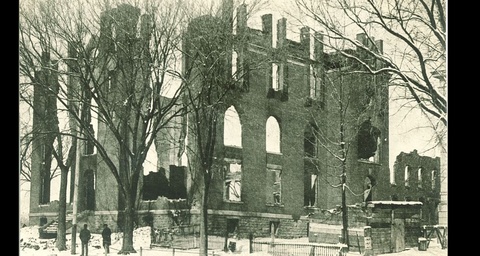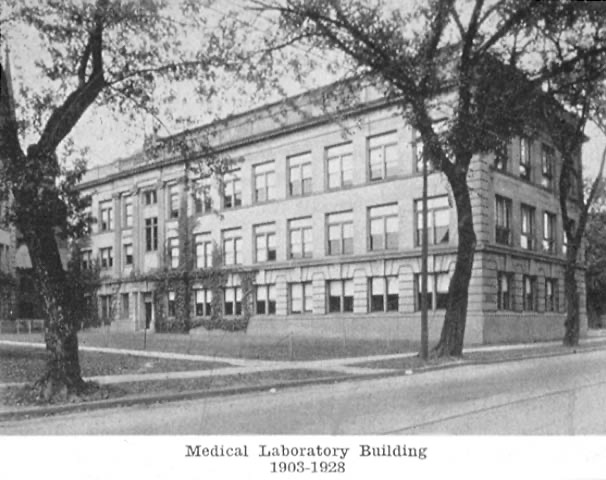Main navigation
Researched and Written by
Dr. Fred Stamler

On March 1, 1901, the general medical building was completely destroyed by fire, along with nearby South Hall, with the complete loss of Medical College laboratories and teaching equipment and materials. Dr. Bierring, in his memoirs, gave much credit to Dean Middleton of the Medical College for prompt and effective action to provide emergency quarters for the next session, and University President McLean was also cited for his leadership in a successful campaign for legislative appropriations to provide for the erection of a new medical building. Dr. Bierring was chosen to travel to European medical centers to select essential laboratory equipment, supplies and anatomical and pathological specimens for the next school year, as well as to formulate plans for modern laboratory facilities for the new building. The State Legislature authorized the construction of two new buildings to replace those destroyed by fire, but delay in construction occurred, and the new facilities first became available for use in the fall of 1904. Temporary quarters were provided in the new Hall of Liberal Arts (now Schaeffer Hall) and the Medical College was able to continue without interruption. The two new buildings were named the Hall of Anatomy and the Hall of Histology, Physiology and Pathology. They were built near the new University Hospital which had recently replaced the old Mechanics Academy that had served inadequately as the first hospital for the Medical College. These buildings were to serve as medical laboratories until a new Medical Laboratory Building was completed in 1928.

The old buildings then were converted to use by the Zoology Department, and currently house the department’s successor, the Biology Department.
The college term of 1902-03 was Walter Bierring’s last as Head of Pathology and Bacteriology, before becoming Professor and Head of the Department of Theory and Practice of Medicine, which position he held until 1910. At that time he left the University to move to Des Moines, where he remained active in medicine for many years, attaining national and international prominence perhaps not equaled by any other Iowa physicians to this day.